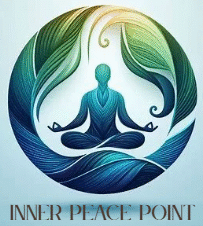
Mindfulness meditation isn’t some new-age trend. It’s a practice that has deep roots in ancient traditions, finding its way into the everyday hustle to help busy people manage stress. Life gets hectic, and if your mind is racing, mindfulness can bring some much-needed calm.
At its core, mindfulness meditation revolves around staying present in the moment, letting go of judgment, and accepting your thoughts as they are. Achieving this state of mind doesn’t happen overnight. It takes practice and patience, but the benefits are worth it. By focusing on the here and now, we can teach ourselves to handle stress more effectively.
Why so popular right now? Well, it’s because the frantic pace of modern life demands a way to re-center. Amid work pressures, personal responsibilities, and endless to-do lists, mindfulness offers a time-out—a mental pause button, if you will.
Mindfulness meditation has been proven to calm the body and the mind. It lowers cortisol levels—the stress hormone responsible for that gnawing feeling of anxiety—and allows for a clearer, more deliberate approach to daily challenges. It’s all about equipping yourself with the skills to take on stress without becoming overwhelmed.
Giving mindfulness a shot might just be the step you need to improve not just how you handle stress, but your overall well-being. It’s about finding peace in the chaos and learning to navigate life’s stresses with grace.

Understanding the 5 R’s of Mindfulness
Ever feel like you’re caught in a whirlwind of stress, not sure where to begin calming things down? The 5 R’s of mindfulness are like a trusty roadmap to steer us back to tranquility. Each step builds on the last, guiding us from recognizing stress to acting mindfully in the face of it.
First up is to Recognize. It’s all about being aware when stress starts creeping in. Listen to your body and mind. Those tight shoulders or racing thoughts are signals that you need a breather.
Refrain is next. Once you’re aware, it’s time to step away from those pesky stress triggers, even if just for a moment. Whether it’s an overwhelming task or a tense conversation, give yourself the space to regroup.
Then comes Relax. This step encourages us to unwind and release tension. Simple techniques like deep breathing or a quick walk can work wonders. It’s about letting your mind and body chill out and reset.
Next, Reflect. Thinking over the situation helps you understand what’s really bugging you and why. Was it something you can change, or is it beyond your control? Either way, reflection brings clarity.
Finally, Respond. With a clear mind, decide how to tackle those stressors head-on. Choose actions that align with your goals and values, ensuring you handle stress in a way that feels right for you.
Mastering the 5 R’s doesn’t happen overnight. It’s a cycle you keep practicing until it’s second nature. But trust that over time, these steps will become powerful tools in your stress-busting toolkit.
Discovering Stress-Reducing Meditative Practices
When it comes to meditation, not all practices are cut from the same cloth, but many have a knack for easing stress. Let’s explore a few that stand out for their soothing effects.
Focused attention meditation is one approach that helps you zero in on single-minded concentration. Whether it’s your breath or a simple sound, honing your focus on one element can ground you in the present moment, leaving stress in the rearview.
Then there’s mindfulness-based stress reduction, often referred to as MBSR. It’s a structured program that blends mindfulness meditation with yoga and body awareness. Designed to help manage stress, pain, and illness, its benefits are impressive and widespread, particularly in healthcare settings.
Loving-kindness meditation takes a slightly different tack. Instead of just focusing within, you extend compassion and warmth—not just to yourself, but to others, too. This approach can melt away stress and replace it with a heartwarming sense of empathy and connectedness.
Getting started on these meditation techniques might seem intimidating, but starting small brings big changes over time. Commit just a few minutes each day to one practice and gradually introduce more. The goal isn’t perfection—it’s progress. Lift the pressure off your shoulders and take one calm breath at a time.

Demystifying the 3 C’s of Mindfulness
Mindfulness goes beyond just sitting quietly or living in the present. It’s also about cultivating three vital qualities—Contentment, Compassion, and Concentration—known as the 3 C’s of mindfulness.
Contentment is all about finding satisfaction with where you are right now, not just physically, but emotionally and mentally, too. It’s the art of appreciating the present moment, with its imperfections. By practicing gratitude and acceptance, you’ll find that contentment is within reach, making stress take a backseat.
Compassion comes next, targeting the way we treat ourselves and others. It’s about being gentle, patient, and understanding, especially when things aren’t going your way. By embracing compassion, you’re more likely to react to stress with kindness, rather than frustration.
Concentration locks down the ability to focus amidst chaos. It’s sharpening your attention so that distractions lose their grip on you. With better concentration, stress doesn’t get to run the show, giving you the power to face challenges with a clear head.
Incorporating these 3 C’s into your mindfulness practice can shift your mindset, extending benefits beyond stress reduction to improve your overall quality of life. It’s a journey of self-improvement full of self-discovery. Along the way, stay patient, keep practicing, and see how these C’s gradually transform your approach to stress.
Exploring Five Key Stress Management Techniques
Let’s tackle stress with some practical techniques. Deep breathing is a classic for a reason—it’s simple, immediate, and wildly effective. By taking slow, deliberate breaths, you can reduce tension in seconds. It’s like hitting the reset button for your nervous system.
Progressive muscle relaxation is another handy tool. It involves tensing and then relaxing each muscle group in your body, starting from your toes and working all the way to your head. This helps release built-up tension, while also bringing you back in touch with your body.
Visual imagery invites the mind to wander—calmly, of course—to a place of peace. Picture your happy place, whether that’s a tranquil beach or a cozy cabin in the woods, and notice how your stress fades away. It’s all about engaging your senses in a soothing narrative.
Nothing beats a bit of exercise for stress relief. Even a short walk or a quick workout can do wonders to clear the mind and release endorphins, those feel-good chemicals that give your mood a natural boost.
Lastly, mastering time management can be a game changer. Prioritizing tasks, breaking them into smaller steps, and setting realistic deadlines can ease the burden of stress by making your workload more manageable. With good planning, you can tackle anything with a cool head.
These techniques offer a variety of ways to take control of stress. The key is to find what resonates with you and fits into your lifestyle. With practice, managing stress becomes not just doable, but a draw for positive energy and mental clarity.
Disclaimer: The content on this website is for informational purposes only, and should not replace professional medical advice.
